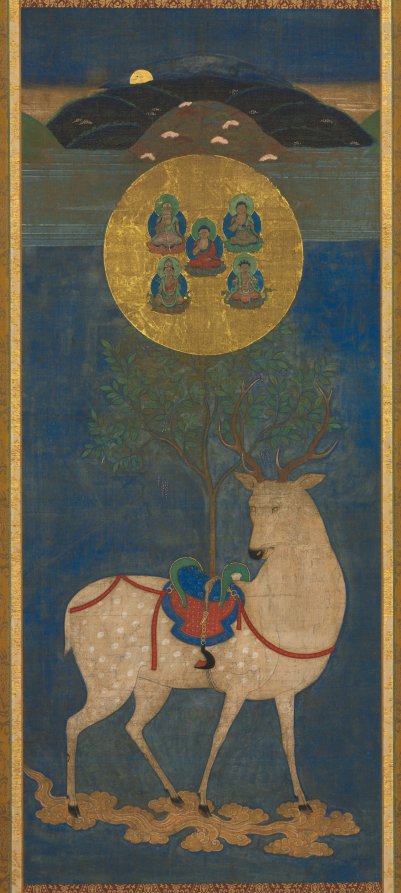| schema:description 10 | "culture: Japan, Nanbokuchō period (1333-92) to Muromachi period (1392-1573)" |
| schema:description | "creditline: Leonard C. Hanna, Jr. Fund" |
| schema:description | "id: 154073" |
| schema:description | "current_location: 003 Special Exhibition Hall" |
| schema:description | "tombstone: Kasuga Mandala, 1300s-1400s. Japan, Nanbokuchō period (1333-92) to Muromachi period (1392-1573). Hanging scroll; ink, color and gold on silk; image: 95.6 x 39.1 cm (37 5/8 x 15 3/8 in.); mounted: 184.2 x 63.8 cm (72 1/2 x 25 1/8 in.). The Cleveland Museum of Art, Leonard C. Hanna, Jr. Fund 1988.19...(more)" |
| schema:description | "measurements: Image: 95.6 x 39.1 cm (37 5/8 x 15 3/8 in.); Mounted: 184.2 x 63.8 cm (72 1/2 x 25 1/8 in.)" |
| schema:description | "wall_description: Riding on a rolling cloud, a spotted deer wears a brightly colored saddle. The saddle supports a branch of the evergreen Sakaki tree, trailing wisteria vines that cradle a large golden mirror. Within the mirror sit the five Buddhist manifestations (<em>honjibutsu</em>) of the deities (<em>kami</em>) of the Kasuga Grand Shrine in Nara. The presence of the deer—the vehicle of the deity Takemikazuchi no Mikoto of the first of the five halls of the shrine—and the characteristics of the mountain range at the top of the painting make clear the association with the sacred site of Kasuga. The painting was likely created for an individual’s personal devotions to the Kasuga deities...(more)" |
| schema:description | "collection: ASIAN - Hanging scroll" |
| schema:description | "technique: hanging scroll; ink, color and gold on silk" |
| schema:description | "type: Painting" |

